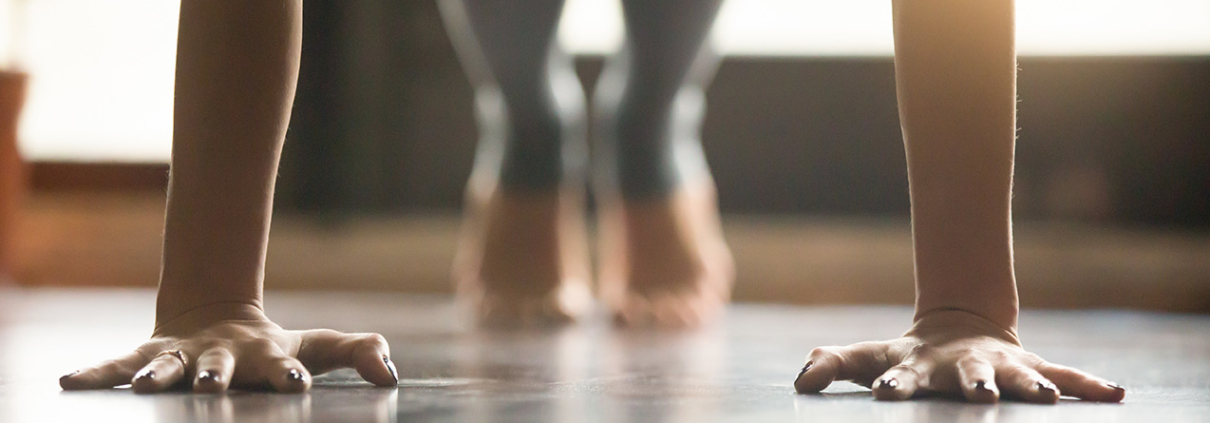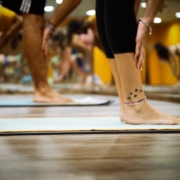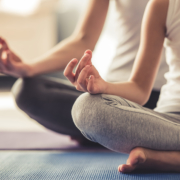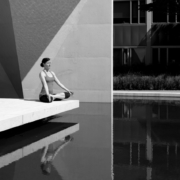Teaching Yoga: Some Thoughts On The Topic of Skilfulness
The other day I went to a yoga class taught by a colleague of mine and I was reminded of what an absolute treat it is to be led in practice by a skilled teacher. The topic of skill is one that I contemplate regularly and am deeply interested in. As a student of yoga I am interested in learning how to recognize and appreciate skillfulness in my teachers, as well as knowing how to separate that from simple charisma which is not as easy to qualify. As a teacher, I am interested in learning how to cultivate skillfulness. And as a teacher trainer, I am interested in learning how to define and measure it in an objective way so that others can begin to cultivate it for themselves.
So what do I mean when I call a class skillful? And how is this skillfulness expressed?
At this point in time, I personally look to three primary categories in which to observe or cultivate skillfulness. These three categories are what I will call Aim, Structure, & Articulation. As students, we can observe this in our teacher’s classes and as teachers, we can practice some hard skills that will help us to increase our skillfulness in these three areas. This is what I have outlined in this article today.
Aim: What Do You Want To Teach To Your Class?
Our Aim on any given day is essentially our objective, our intention, or our focus for the class. It is what we have chosen to offer to our students and so becomes the anchor point for our Structure. Our Aim will also help us to prioritize how we choose to Articulate the teachings on that given day. When we have a clear Aim it means we walk into the class with an understanding of what it is we want to teach. It means we have given our Aim some thought and attention, and we have considered how we are going to meet this aim via the class we are now going to offer.
Your Aim could be centered around a pose you want to give your students more understanding of, a biomechanical movement principle you want to help them feel in their body, a philosophical teaching you want to educate them on, or simply a mood you want to give them a clear experience of.
The very best teachers you studied with in college, university, or any other adult education courses you have taken always came into the classroom with clear learning objectives. Without them their classes would have lacked focus and purpose. As adults we become frustrated when we pay for learning experiences where the teacher does not have a clear idea of What they want to teach (Aim) and How they are going to do so (Structure & Articulation). And yet so many yoga teachers walk into the classroom with a poorly thought out Aim leading to classes that lack cohesion. So how can we raise our level of skillfulness here?
- Take some time before class to ask yourself what you actually want to teach or offer to your students today
- If your Aim is centred around a physical focus ensure it is something that you understand clearly yourself (hint: this will allow you to create a clear Structure for teaching it)
- If your Aim is philosophical ideally it is something that is alive in you and is aligned with your own personal philosophy, so that you are more able to express it with clarity & conviction
- If you Aim is mood or experience based ask yourself whether or not you can truly embody that mood space today as your ability to do so will make a big difference in whether or not the students will be able to receive it from you
By taking the time to clarify your Aim before you head into the classroom your classes will already have a more focused Structure, but let’s look at the next two pillars of skillfulness to see how they support Aim.
Structure: How Are You Going To Teach To Your Aim?
Our Structure is essentially our class sequence. It provides order and form for our Aim. It is the way in which we will invite our students to embody the experience we have chosen to provide for them. You can see how Aim supports Structure and allows us to make more discerning choices about what to put into our class on any given day, and what to leave out, which is why we always start with Aim.
There are many ways in which to sequence a class, and none of them are inherently better than the others, but each choice we make has an affect and this is something we have to understand so that our Structure supports our Aim and allows us to make a clear offering.
When our Structure does not reflect our Aim our students may experience a quality of dissonance between our teaching focus (Aim) and what we are actually asking them to do (physical structure of class). Without a mindfully thought out Structure or plan for our class we will often fall back on our default yoga flows and easy to teach postures, which may or may not support our Aim. I have been to many classes where there were many unnecessary or conflicting postures/flows thrown into the class that ultimately detracted from the Aim the teacher had stated. On a personal level once I started designing my classes with a clear Aim I was more able to expand my teaching vocabulary, and my classes became more focused, rather than a repeat of same thing every time with very little variation. Challenging yourself to Structure your classes based on a specific Aim will keep you more engaged in your teaching work, and your students will appreciate it too. Here are some tips to help you with this.
- If your Aim is a physical focus such as a peak pose make clear choices as to which postures & shapes will help your students access your chosen peak
- Get those supporting postures in right from the get go rather than just teaching your default warm ups, make targeted and specific choices
- If your Aim includes educating your students on a biomechanical principle plan ahead for any drills, props, or partner exercises that will help them to feel it in their body and choose where in the class these will go best
- If your peak posture was deep and required your students to do a lot of repetitive actions to prepare for it ensure that the work you do after the peak will counter those actions so that there is an overall experience of balance
- If your Aim is philosophical or mood based consider how you will invite your students to embody or experience the teaching in the context of a physical practice using posture, shape, & action (Bonus: just asking this question will make you dig deeper into your personal understanding of the teaching you want to offer and is good work for deepening your own knowledge base)
Having a clear Structure for your class will ensure that you are able to deliver your Aim with greater clarity on a more consistent basis and will keep you engaged with your work as a teacher.
Articulation: How Are You Going To Express & Instruct Your Aim?
Articulation essentially covers how you will use language to instruct, to invite, and to inspire your students. This has to do not only with what we say, but also how and when we say it. The way in which we use language is so very important to the overall experience our students will have in our classes, as it is one of the primary tools we use in our teaching. We give verbal instructions to our students, and they respond with physical actions, so it goes without saying that part of being skilful in our Articulation is to give clear, concise, and targeted cues to our students.
Skilful teachers use direct language when instructing movement or action. There is a place for flowery phrases, invitational language, and metaphor, but when asking our students to create a physical action with their bodies we will always see the clearest response when we ourselves are clear and directive in what we say. By using language skillfully we also offer a quality of invisible support to our students. Clarity of instruction allows our students to relax and focus on simply listening to what we are saying and responding with their bodies, without having to expend a lot of mental energy trying to interpret what we are actually asking them to do.
Clear Articulation also allows us to provide information to our students, so that they can make clear choices about how they want to approach the postures or sequences we are teaching. This is very important when teaching mixed level classes (which is any public class these days), and will allow our students to feel not only supported but also empowered.
And finally Articulation also covers the way in which we will use language to provide another layer of depth for the physical experience our students are having. This is where making the choice for very specific descriptive words or turns of phrase can make all the difference in how our students will receive the more subtle teachings we are focusing on and will provide support to our philosophical or mood based Aim. Obviously Articulation is a large topic, but there are some very clear areas we can continually work on as teachers in order to become more skilful in this area.
- Audio record yourself teaching so you are more aware of how you use language and then identify areas you could work on in order to strengthen your Articulation skills
- Simplify your action & movement cues so that they are clear and direct
- Provide clear information to your students when giving them choices as to why they might modify a pose or choose to take a more advanced variation
- Be specific, be precise, but be concise- speak in complete sentences and cut out unnecessary filler words
- When designing a class with a philosophical or mood based Aim take the time to consider key words you might use in class to help support the mood or the philosophical teachings
- Weave those key words into physical instructions as well as reflective moments in class so they have a more potent effect
- Practice scripting out poses or class openings/closings so that you strengthen your Articulation skills
- Bonus Tip: write as often as you can, whether you choose to do so in a personal journal, teaching journal, letters to a friend, or a blog. Practice using language in writing and your speaking skills will become more and more refined
Our ability to Articulate what it is we actually want our students to do, to know, or to experience, is a skill that all teachers should be continually upgrading. By doing this work we are more able to transmit our Aim to our students and so provide them with the best yoga class experience possible.
I hope you enjoyed this article as much as I enjoyed writing it as it helps me to clarify my thoughts on a topic when I write them down. Obviously there is more that can be said about cultivating skillfulness as a teacher, but these three areas represent some very tangible places to consider when we want to dig into the work of refining our teaching skills. Do let me know if you found this article useful and if you have further questions drop me a line, as I always like to hear from you. These are some of the topics I cover extensively in my Advanced Teaching Intensive as I consider them to be primary to skilful teaching, if you are interested in exploring them further you can learn more about that program here.














